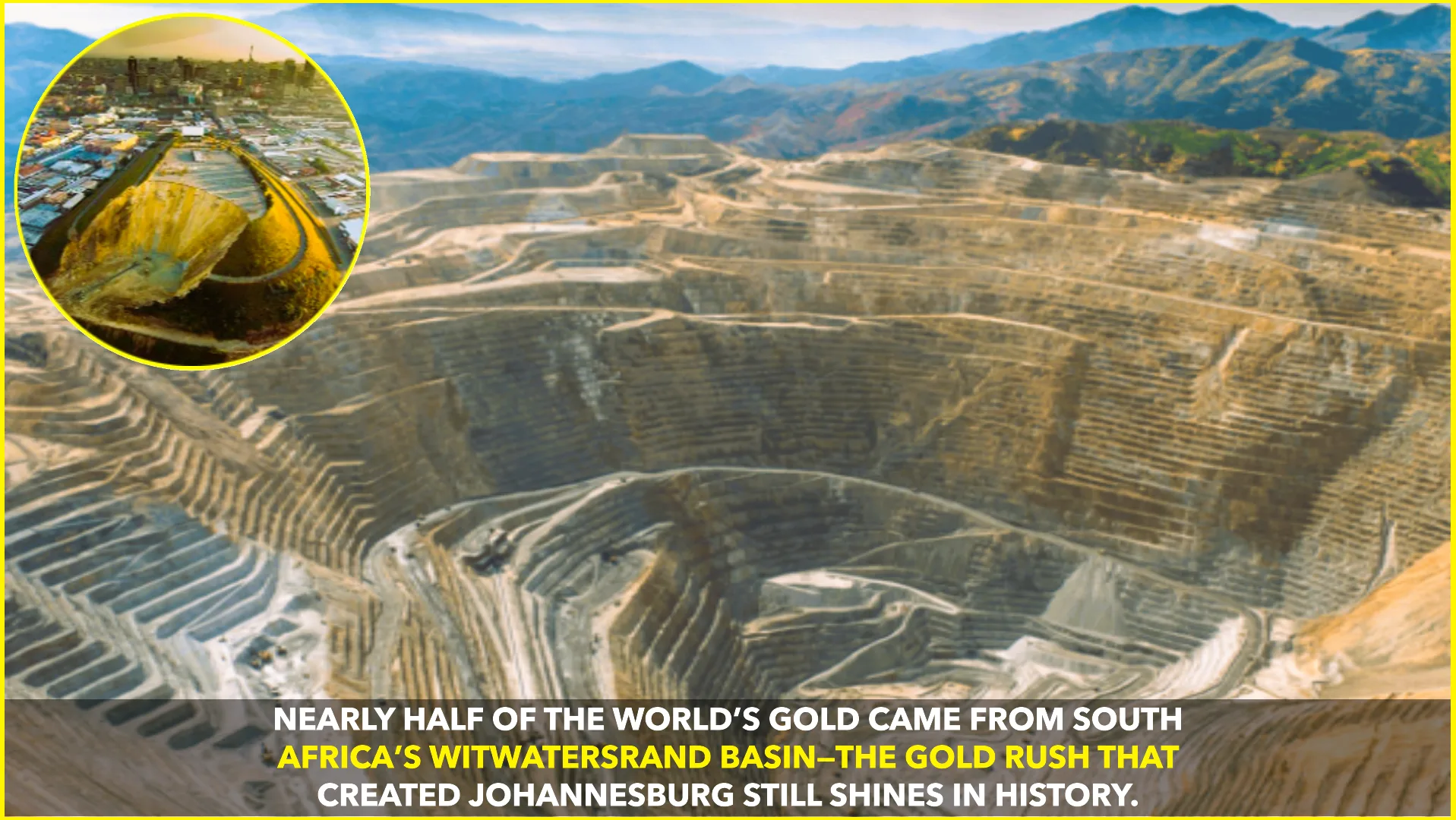Nearly half of all gold ever mined on Earth came from one extraordinary place—the Witwatersrand Basin in South Africa. Since its discovery in 1886, this goldfield has not only shaped the mining industry but also transformed an entire region, creating lasting economic, social, and political ripples across the African continent.
The Witwatersrand, often called “the Rand,” stretches across the heart of South Africa’s Gauteng Province. It was here that prospectors struck fortune in the late 19th century, uncovering massive deposits of gold that would change the course of history. Over the decades, more than 1.5 billion ounces—over 45,000 metric tons—have been extracted, making it the single richest gold region ever known to humanity.
Birth of Johannesburg
Before 1886, the area was a quiet, rural stretch of land with scattered farms. But once gold was discovered, it triggered one of the world’s greatest gold rushes. Thousands of miners, investors, and adventurers flocked to the region, and almost overnight, Johannesburg was born. Today, Johannesburg is not only South Africa’s largest city but also one of Africa’s economic powerhouses, its foundations literally built on gold.
The city’s nickname, “Egoli” or “City of Gold,” reflects its origins. Skyscrapers, bustling streets, and financial centers stand where prospectors once panned streams and dug rudimentary shafts. Without the Witwatersrand discovery, Johannesburg might never have risen to such global prominence.
A Geological Treasure
The Witwatersrand Basin’s unique geology explains its unparalleled gold output. Formed over 2.9 billion years ago, the basin’s gold-rich reefs were deposited in ancient riverbeds, later buried and preserved by geological shifts. The deposits stretch for hundreds of kilometers underground, forming one of the deepest and most extensive mining systems in the world.
At its peak, mines in the Rand reached depths of more than 4 kilometers, making them some of the deepest mining operations on Earth. The engineering feats required to extract gold at such depths helped establish South Africa’s reputation as a global mining leader.
Economic and Global Impact
Gold from the Witwatersrand not only transformed South Africa’s economy but also influenced the global financial system. By the early 20th century, South Africa became the largest gold producer in the world, and its output helped fuel the gold standard—the system that once underpinned global currencies.
Mining wealth funded infrastructure, railways, and industries across South Africa. However, it also entrenched inequalities. The migrant labor system, racial segregation in the mines, and the harsh conditions faced by Black workers were precursors to South Africa’s broader apartheid policies. Thus, the Witwatersrand’s legacy is as complex as it is golden.
Decline but Not Forgotten
While the Witwatersrand Basin still produces gold, its output has declined sharply since the 1970s. Rising costs, aging infrastructure, and the difficulty of mining deeper seams have slowed production. Other nations like China, Australia, and Russia have overtaken South Africa in annual gold production.
Yet, no other mining region has matched the sheer volume of gold that the Rand produced over its lifetime. Its 1.5 billion ounces remain unmatched—a geological jackpot unlikely to ever be repeated.
The Golden Heartbeat
Today, the Witwatersrand is remembered as the heartbeat of South Africa’s mining industry. Museums, old shafts, and historic sites in Johannesburg pay tribute to the gold rush that built the city. The basin stands as both a monument to human ambition and a reminder of the costs—economic booms, cultural transformations, and deep social struggles—that came with it.
For South Africa and the world, the Witwatersrand is more than just a mine. It is a symbol of prosperity, a driver of industrialization, and a cornerstone of modern Johannesburg. Even as global mining shifts elsewhere, the Rand remains a glittering chapter in the story of gold.
Source: BBC News, Mining Technology, The Conversation










